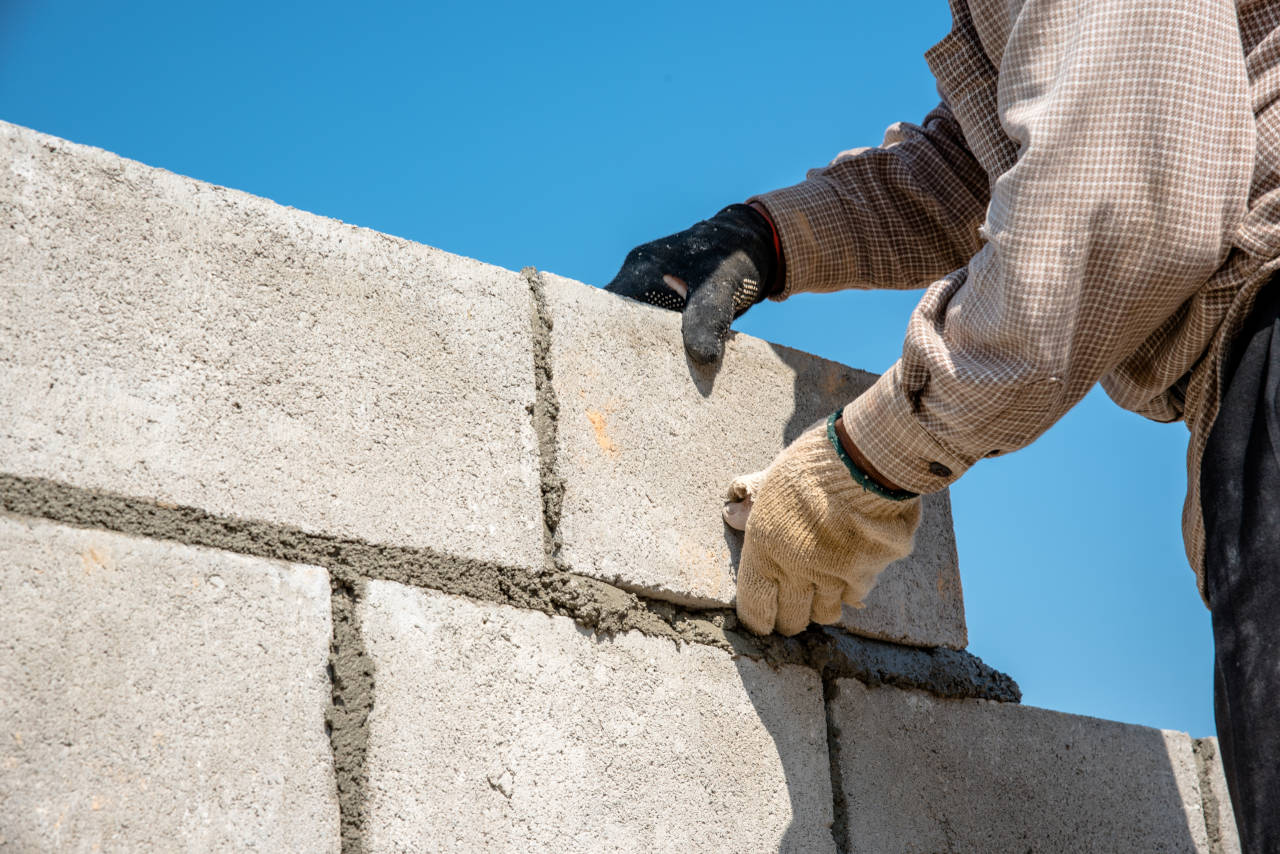Mason Special Finishing ( 6 month course )
Mason Special Finishing click here
Mason Special Finishing: The job role is responsible for performing specialized finishing
works on masonry surfaces including wall, floor and ceiling.
Brief Job Description: The job role is responsible for various types of finishing works on
walls, floors, ceilings and other surfaces such as ornamental, exposed grit/aggregate
wash, cement washing, stone-creting, POP plastering and various flooring works to create
decorative surfaces as per specifications and drawings.
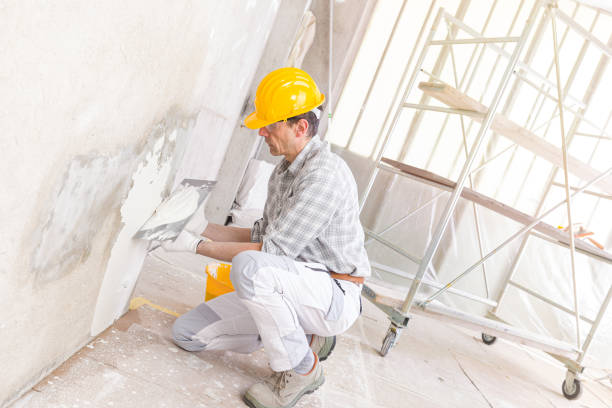
Personal Attributes: The individual is expected to be physically fit and should be able to
work across various locations in extreme weather/site conditions. The person must be
able to perform efficiently within a team, handle the various masonry tools and materials
and work responsibly.
Description
Sector Sector is conglomeration of different business operations having similar
business and interests. It may also be defined as a distinct subset of the
economy whose components share similar characteristics and interests.
Sub‐Sector Sub‐Sector is derived from a further breakdown based on the characteristics
and interests of its components
Occupation Occupation is a set of job roles, which perform similar/related set of
functions in an industry
Job role Job role defines a unique set of functions that together form a unique
employment opportunity in an organization.
Occupational Standards
(OS)
OS specify the standards of performance an individual must achieve when
carrying out a function in the workplace, together with the knowledge and
understanding they need to meet the standard consistently. Occupational
Standards are applicable both in the Indian contexts.
Performance Criteria Performance Criteria are statements that together specify the standard of
performance required when carrying out a task.
Qualifications Pack (QP) Qualifications Pack comprises the set of OS, together with the educational,
training and other criteria required to perform a job role. A Qualification Pack
is assigned a unique qualification pack code
Qualification Pack Code Qualification Pack Code is a unique reference code that identifies a
qualifications pack.
National Occupational
Standards (NOS) NOS are Occupational Standards which apply uniquely in the Indian context.
Scope Scope is the set of statements specifying the range of variables that an
individual may have to deal with in carrying out the function which have a
critical impact on the quality of performance required.
Knowledge and Understanding
Knowledge and Understanding are statements which together specify the
technical, generic, professional and organizational specific knowledge that an
individual needs in order to perform to the required standard
Organizational Context Organizational Context includes the way the organization is structured and
how it operates, including the extent of operative knowledge managers have
of their relevant areas of responsibility.
Technical Knowledge Technical Knowledge is the specific knowledge needed to accomplish specific
designated responsibilities.
Core Skills / Generic Skills Core Skills or Generic Skills are a group of skills that are key to learning and
working in today’s world. These skills are typically needed in any work
environment. In the context of the OS, these include communication related
skills that are applicable to most job roles.
Keywords /Terms Description
CON Construction
NSQF National Skill Qualifications Framework
QP Qualification Pack
OS Occupational Standards
TBD To Be Decided
Carry out surface finish like Grit wash / Exposed aggregate plastering, Stone Crete, Cement wash ,dry and wet cladding of stones on masonry surfaces
Description
This unit describes the skills and knowledge required to carry out surface finish like
Grit wash / Exposed aggregate plastering, Stone-Crete, Cement wash & dry and wet
cladding of stones on masonry surfaces
Scope
This scope covers the following:
Carry out exposed grit wash /exposed aggregate plaster finishes on
masonry surfaces
Carry out stone-Crete finishes on masonry surfaces
Carry out Cement wash finishes on masonry s walls
Carry out other Special Ornamental Finishes including plaster molding
Carry out dry and wet cladding of stones
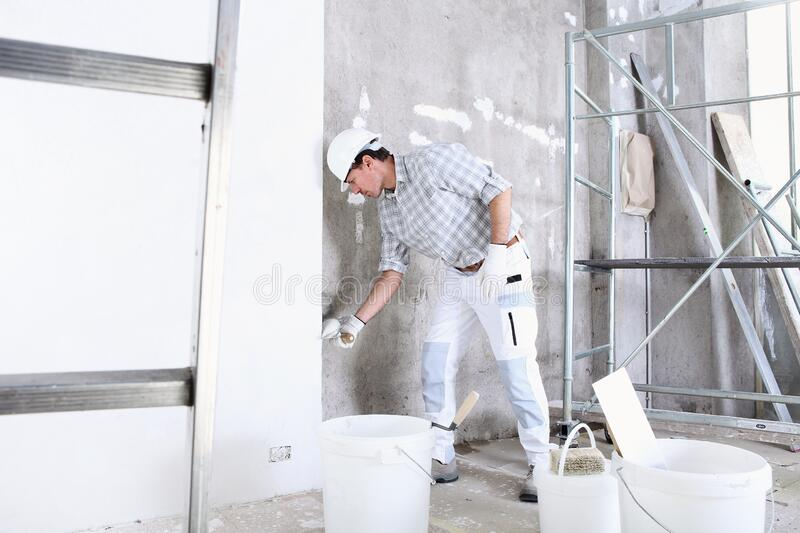
Performance Criteria (PC) w.r.t. the Scope
Element Performance Criteria Carry out exposed Grit wash /Exposed aggregate plaster finishes on masonry surfaces
To be competent, the user / individual on the job must be able to:
PC1. level the surface with an appropriate float prior to application of grit wash
PC2. select appropriate aggregates for exposed plastering for rough and tough
finishes as per the aesthetic requirements
PC3. mix the selected aggregates (cement, coarse aggregate like crushed natural
stone chips, fine marble powder and water) in the appropriate ratio:
For Grit Wash Plaster appropriate ratio is 2.5:1:6
For White Cement : Dolomite Power : Chips
PC4. scrub the surface gently with a nylon brush or water to remove the cement
on the top of the chips and to expose the aggregates
Carry out Stone Crete finishes on masonry surfaces
PC5. select the appropriate aggregates for stone creting
PC6. mix the selected aggregates in the appropriate ratio:
For Stone-crete approximate ratio is 1:1
For White Cement: Coarse dolomite powder / quartz sand
PC7. select the right pigments to be added for the desired shade as per the
aesthetic appeal of the surface as per the requirements:
PC8. level and cure the surface to get the desired aesthetic looks after the
application on the walls
PC9. chisel the surface (if required) to give Ashlar stone finish
Carry out Cement wash finishes on masonry s walls
PC10. clean the surface for application of cement wash
PC11. select appropriate aggregates for cement wash and mix the aggregates in
the appropriate ratio
PC12. ensure appropriate mix of synthetic inorganic oxide colors to the white
cement in dry state to avoid patches of colors on the finished surface
PC13. apply undercoat of special cement primer (if required) on a suface which is
too smooth
PC14. apply coats on prepared pre-wetted walls using an appropriate brush /
spray
PC15. ensure proper curing of the surface with water
PC16. ensure avoidance of direct sunlight as it may leave brush marks on the
surface as the cement sets faster
Carry out other Special Ornamental Finishes including plaster molding
PC17. mix Portland cement, sand, lime and add suitable structure like stone chips,
colored concrete, etc. to create a textured and ornamental finishes using
plaster mouldings as per specification
PC18. prepare and sprinkle dry topping mix of color, stone dust and cement as
per specification and sprinkle evenly over the surface to create decorative
finish
PC19. prepare and sprinkle base color and topping dust as per specification over
the surface at random locations to create slate type color finish as per
applicability
PC20. apply random colors and textures on the surface at random locations to
create decorative colors / patterns
Carry out dry and wet cladding of stones
PC21. prepare thin bed mortar using appropriate fillers and adhesives and lay
stone
on masonry wall surfaces as per design specification/instructions
PC22. use fixed or embedded anchors or mechanical ties to fix stone on horizontal
masonry surfaces for dry and wet cladding
PC23. ensure sufficient gap for drainage between the wall and stones
Knowledge and Understanding (K)
A. Organizational Context (Knowledge of the company / organization and its processes)
The user/individual on the job needs to know and understand:
KA1. standard practices of finishing works on masonry surfaces
KA2. safety rules and regulation for handling and storing required finishing tools,
equipment and materials
KA3. personal protection including the use of related safety gears & equipment
KA4. how to request tools and materials as per set procedures
KA5. maintenance of tools and equipment
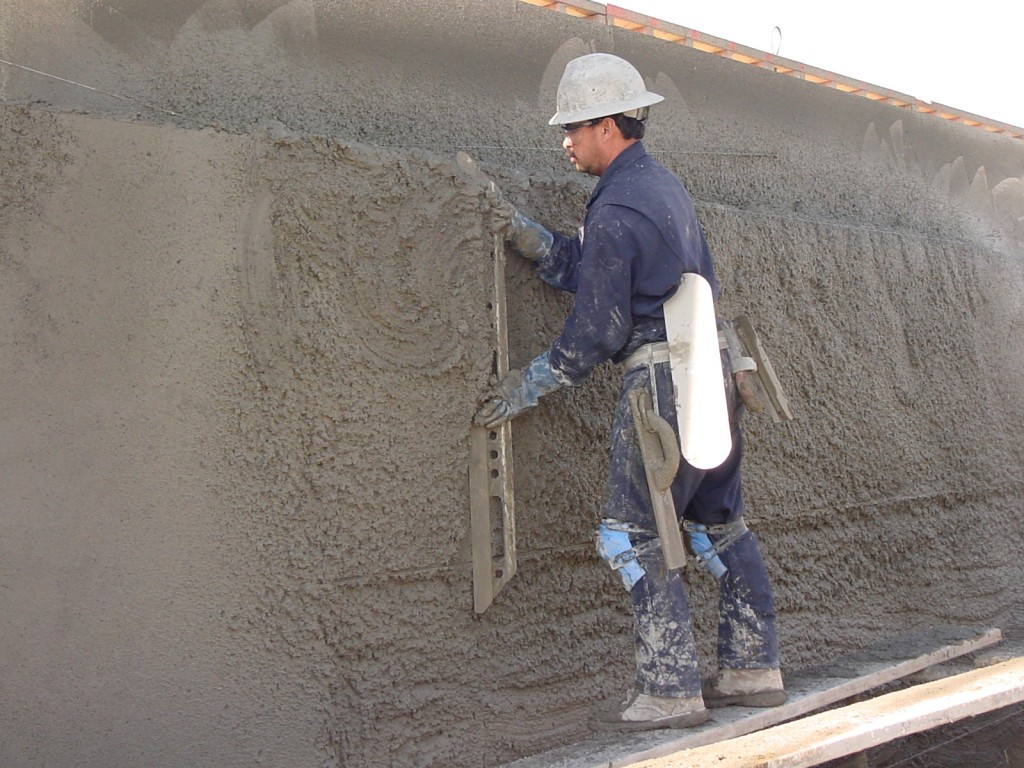
B. Technical Knowledge
The user/individual on the job needs to know and understand:
KB1. sketches of the area / surface on which special finishing is to be done
KB2. basic principles of measurement
KB3. standard specification of all finishing tools ,equipment and materials along
with their care and maintenance of tools and equipment
KB4. different types of special finishes and process for application as per the
applicability for Industrial , commercial and residential purpose such as:
Grit finish plastering
Exposed aggregate plastering
Stone-Crete
Cement wash etc.
KB5. basic techniques for surface preparation prior to application of surface
finish
as per the type of the surface
KB6. basic methods and techniques of preparing bed mortar, cement slurry and
cement paste required along with various stone chips, primer application
etc.
KB7. various types of pigments, synthetic inorganic oxides ,their the basic
properties and preparation technique as per color ,shade & pattern
KB8. methods of application of pattern according to designated finish and
specification
KB9. dry and wet cladding of stones
KB10.estimate any special requirements for the surface finish of the site
Skills (S)
A. Core Skills/ Generic Skills Writing Skills
The user/ individual on the job needs to know and understand how to:
SA1. write in one or more language, preferably in the local language of the site
Reading Skills
The user/ individual on the job needs to know and understand how to:
SA2. read in one or more language, preferably in the local language of the site
SA3. read sketches provided by the superior to do finishing work
SA4. read instructions, guidelines, sign boards, safety rules and safety tags
SA5. read instructions and exit routes during emergency
Oral Communication (Listening and Speaking skills)
The user/ individual on the job needs to know and understand how to:
SA6. speak in one or more language, preferably in one of the local languages of site
SA7. listen and follow instructions given by supervisor
SA8. orally and effectively communicate with team members
Decision Making
The user/ individual on the job needs to know and understand how to:
SB1. decide whether work place is safe for working and also relevant task is not
creating hazardous condition for others
SB2. decide whether work is adequately defined for the day, work front is clear,
and adequate material and tools are available for performing the work
Plan and Organize
The user/individual on the job needs to know and understand how to:
SB3. ensure that work is adequately defined for the day, work front is clear, and
adequate materials and tools are available to perform the work
SB4. plan & organize required resources in coordination with team members and
superiors
Customer centricity
The user/individual on the job needs to know and understand how to:
SB5. complete work as per the agreed time schedule & quality
Problem solving
The user/individual on the job needs to know and understand how to:
SB6. rectify the setting/alignment or level of surface post completion of finishing work
SB7. resolve and solve any conflict within the team
Analytical Thinking
The user/individual on the job needs to know and understand how to:
SB8. optimize resources efficiently
SB9. minimize wastage in the workplace
SB10. reconcile material consumption
SB11. assess quantity and quality of materials for day work
Critical Thinking
The user/individual on the job needs to know and understand how to:
SB12. evaluate the complexity of the task and seek assistance and support wherever required
SB13. bring to the notice of the superiors any requirement of the requisite resources
SB14. bring to the notice of the superiors violation of any safety norms which may lead to accidents
SB15. check the quality of scaffolding/working platform from all aspects of safety
Carry out POP punning, POP plastering, decorative floor finishes and other special
finishing on finished masonry surfaces using moulds
Description
This unit describes the skills and knowledge required to carry out POP punning, POP
plastering, and other special finishing on finished masonry surfaces using moulds.
Scope
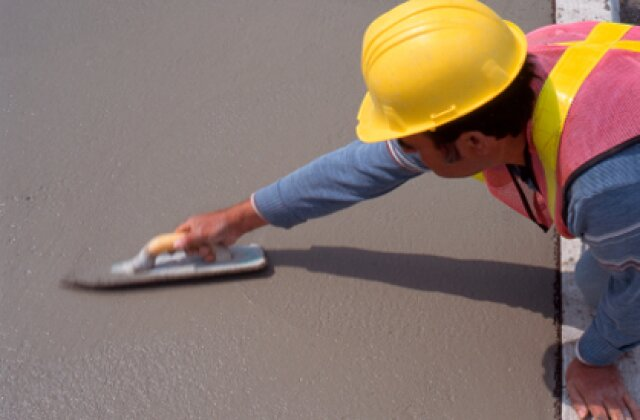
This scope covers the following:
Carry out solid plastering works on the various surfaces (mainly outdoors)
Carry out fibrous plastering works for tailor made surfaces (mainly indoors
plastering works)
Carry out Gypsum plastering
Carry out special POP finishing in ornamental structures using POP moulds
Performance Criteria (PC) w.r.t. the Scope
Element Performance Criteria Carry out solid plastering works on the various surfaces (mainly outdoors)
To be competent, the user / individual on the job must be able to:
PC1. ensure that surface is clean and apply base layer of gypsum plaster over it
prior to installing plasterboard
PC2. install layer of stiff foam for insulation as and when required
PC3. install supporting mesh framework on foam insulations and apply polymer
based plaster to surface as per specification
PC4. measure, cut and fix plaster board to mesh framework with metal fasteners
as per applicability
PC5. install supporting mesh framework on masonry surfaces as per applicability
and apply base layer of gypsum plaster to it as per specification
PC6. mix and apply coats of pop plaster to walls ,ceilings and plasterboard
surfaces & level and smoothen it
PC7. add decorative chips ,grits to final coat and apply for specified decorative
finish
Carry out fibrous plastering works for tailor made surfaces (mainly indoors plastering works)
PC8. prepare specified fibrous plaster mix using sand, water, lime and ox-hair as
a binding material (if applicable) in specified ratio as per the
requirements/instructions
PC9. fix a mesh/lath over the fabric/masonry surface & spread rich plaster blend
over the mesh / lath for intricate and ornamental finishes
PC10. make medallions / POP designs in desired patterns for ornamental ceiling
works around light fixtures and corners as per applicability
PC11. cast fibrous plaster mix into appropriate shape to create ornamental
designs
Carry out Gypsum Plastering
PC12. ensure specified preparation of the surface receiving gypsum plaster
PC13. set out the wall layouts as per the approved shop drawings
PC14. prepare specified mix of gypsum plaster for application
PC15. ensure proper curing of finished surface
PC16. apply within level strips to ensure line and level surfaces
Carry out special POP finishing in ornamental structures using POP moulds
PC17. prepare plaster moulds for ornamental finishing works on the masonry
surface as per applicability
PC18. pour or spray a specified mixed plaster into the mould and ensure specified
time for drying of the moulded pattern
PC19. apply specified curing agents to the surface to ensure correctly formed
patterns for ornamental works
PC20. fix the moulded pattern on finishes masonry wall, floor and ceiling as per
pattern/instructions
Knowledge and Understanding (K)
A. Organizational Context (Knowledge of the company / organization and its processes)
The user/individual on the job needs to know and understand:
KA1. standard practices of POP finishing works on masonry surfaces
KA2. safety rules and regulation for handling and storing required finishing tools,
equipment and materials
KA3. personal protection including the use of related safety gears & equipment
KA4. how to request tools and materials as per set procedures
KA5. maintenance of tools and equipment
B. Technical Knowledge
The user/individual on the job needs to know and understand:
KB1. basics sketches of the area / surface on which special finishing is to be done
KB2. basic principles of measurement along with simple geometry that may be
required for laying of stones
KB3. basic techniques / methods of plastering on surfaces including solid and
fibrous plastering as per the requirements
KB4. standard sizes of all masonry tools and materials along with their usage
methods required at the respective construction site for different types of
special finishes involving both solid and fibrous plastering
KB5. methods of preparing surfaces for applications of plaster such as drywall
tapping, etc.
KB6. methods of coating through plaster and types of coats for application such
as scratch coats, brown coats, white coats, etc.
KB7. basic properties and specifications of plastering materials and mixes used
for the respective surface for better aesthetic / visual appeal
KB8. basic methods of application of pattern according to designated finish and specifications for the respective surfaces as per the client requirements
KB9. how to make medallions / POP designs in decorative patterns
along with ornamental ceiling plaster
KB10. estimate any special requirements for the application of POP on the surface
including making of any intricate designs / patterns on masonry surface
Skills (S)
A. Core Skills/ Generic Skills Writing Skills
The user/ individual on the job needs to know and understand how to:
SA1. write in one or more language, preferably in the local language of the site
Reading Skills
The user/ individual on the job needs to know and understand how to:
SA2. read in one or more language, preferably in the local language of the site
SA3. read sketches provided by the superior to do finishing work
SA4. read instructions, guidelines, sign boards, safety rules and safety tags
SA5. read instructions and exit routes during emergency
Oral Communication (Listening and Speaking skills)
The user/ individual on the job needs to know and understand how to:
SA6. speak in one or more language, preferably in one of the local languages of
the site
SA7. listen and follow instructions given by supervisor
SA8. orally and effectively communicate with team members
B. Professional Skills
Decision Making
The user/ individual on the job needs to know and understand how to:
SB1. decide whether work place is safe for working and also relevant task is not
creating hazardous condition for others
SB2. decide whether work is adequately defined for the day, work front is clear,
and adequate material and tools are available for performing the work
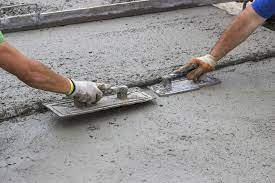
Plan and Organize
The user/individual on the job needs to know and understand how to:
SB3. ensure that work is adequately defined for the day, work front is clear, and
adequate materials and tools are available to perform the work
SB4. plan & organize required resources in coordination with team members and
superiors
Customer centricity
The user/individual on the job needs to know and understand how to:
SB5. complete work as per the agreed time schedule & quality
Problem solving
The user/individual on the job needs to know and understand how to:
SB6. rectify the setting/alignment or level of surface post completion of finishing
work
SB7. resolve and solve any conflict within the team
Analytical Thinking
The user/individual on the job needs to know and understand how to:
SB8. optimize resources efficiently
SB9. minimize wastage in the workplace
SB10. reconcile material consumption
SB11. assess quantity and quality of materials for day work
Critical Thinking
The user/individual on the job needs to know and understand how to:
SB12. evaluate the complexity of the task and seek assistance and support
wherever required
SB13. bring to the notice of the superiors any requirement of the requisite
resources
SB14. bring to the notice of the superiors violation of any safety norms which may
lead to accidents
SB15. check the quality of scaffolding/working platform from all aspects of safety
Carry out mosaic, terrazzo, linoleum, vinyl, PVC and laminate wood floor finishes
Description
This unit describes the skills and knowledge required to carry out mosaic, terrazzo,
linoleum, vinyl, PVC and laminate wood floor finishes
Scope
The scope covers the following:
Carry out mosaic flooring
Carry out terrazzo flooring
Carry out linoleum ,vinyl & PVC flooring
Carry out laminate wood flooring
Performance Criteria (PC) w.r.t. the Scope
Element Performance Criteria Carry out mosaic flooring
To be competent, the user / individual on the job must be able to:
PC1. ensure preparation of the surface of floor and make appropriate markings
as per design
PC2. calculate the quantity of materials required based on method adopted if required
PC3. prepare and lay a under coat layer of concrete in specified ratio and thickness
PC4. prepare a base course of lime, marble & pozzolana material in specified ratio
PC5. cut and fix baton strips as per requirement to form panels
PC6. cut or break tiles, stone or other material and place on the above layer as
per design patterns and drawings

PC7. embed the broken tiles, marble pieces into base layer using stone roller
PC8. rub off surface to polish and smoothen the mosaic /terrazzo design surface
PC9. ensure proper curing of floor for a specified period of time prior to use
Carry out terrazzo flooring
PC10. ensure preparation of the surface of floor and make appropriate markings as per design
PC11. calculate the quantity of materials required based on method adopted if required
PC12. prepare and lay a under coat layer of concrete in specified ratio and thickness
PC13. cut and fix baton strips as per requirement to form panels
PC14. mix epoxy mix with hardener and spread it within the strips as per applicability
PC15. prepare and spread an aggregate mix containing glass, marble, stone or c
chips with or without color pigment as per specification
PC16. grind and polish the terrazzo floor once its thoroughly dry
PC17. ensure proper curing of floor for a specified period of time prior to use
Carry out linoleum, vinyl & PVC flooring
PC18. prepare the surface receiving linoleum flooring as per the floor surface such
as
concrete floor
wood floor
preexisting linoleum/vinyl flooring
PC19. calculate the quantity of materials required based on method adopted if required
PC20. smoothen the under laying surface in case of concrete surface prior to flooring
PC21. for preexisting linoleum/vinyl flooring, remove the old sheet and fix thin
plywood as per applicability
PC22. measure ,mark and cut the linoleum ,vinyl and PVC sheet as per the floor
dimensions using appropriate tools
PC23. fix vinyl ,linoleum & PVC sheets on the floors using appropriate adhesives
PC24. use appropriate rollers to release entrapped air from beneath the sheet and
securely adhere it to floor
PC25. use appropriate tools to finish the floor by applying sealant as per
applicability
Carry out laminate wood flooring
PC26. calculate the quantity of materials required for laminate flooring if required
PC27. ensure surface receiving flooring is appropriately prepared
PC28. plan the layout by optimizing the planks used
PC29. measure and cut the planks using appropriate tools
PC30. provide gap for expansion joint as per applicability
PC31. install the laminate planks as per design pattern
PC32. cut around doors and obstacles and install trims by nailing to the wall
Knowledge and Understanding (K)
A. Organizational Context (Knowledge of the company / organization and its processes)
The user/individual on the job needs to know and understand:
KA1. standard practices of flooring works
KA2. safety rules and regulation for handling and storing required flooring tools,
equipment and materials
KA3. personal protection including the use of related safety gears & equipment
KA4. how to request tools and materials as per set procedures
KA5. maintenance of tools and equipment
B. Technical Knowledge
The user/individual on the job needs to know and understand:
KB1. basics sketches of the area / surface on which flooring is to be done
KB2. basic principles of measurement along with simple geometry that may be
required for flooring
KB3. basic techniques / methods of flooring on surfaces
KB4. standard specification of all flooring tools and materials along with their
usage
KB5. methods of preparing surfaces for applications of various decorative
flooring
KB6. methods of various decorative flooring works like mosaic, terrazzo,
linoleum, vinyl, PVC and laminate wood flooring
KB7. different type of adhesives and their application
KB8. basic properties and specifications of flooring materials used for various
decorative flooring works
KB9. basic methods of application of pattern according to designated finish and
KB10. major types and techniques of flooring
KB11. method of calculation of material required for various decorative flooring
works like mosaic, terrazzo, linoleum, vinyl, PVC and laminate wood flooring
Skills (S)
A. Core Skills/ Generic Skills Writing Skills
The user/ individual on the job needs to know and understand how to:
SA1. write in one or more language, preferably in the local language of the site
Reading Skills
The user/ individual on the job needs to know and understand how to:
SA2. read in one or more language, preferably in the local language of the site
SA3. read sketches provided by the superior to do finishing work
SA4. read instructions, guidelines, sign boards, safety rules and safety tags
SA5. read instructions and exit routes during emergency
Oral Communication (Listening and Speaking skills)
The user/ individual on the job needs to know and understand how to:
SA6. speak in one or more language, preferably in one of the local language of
the site
SA7. listen and follow instructions given by supervisor
SA8. orally and effectively communicate with team members
B. Professional Skills
Decision Making
The user/ individual on the job needs to know and understand how to:
SB1. decide whether work place is safe for working and also relevant task is not creating hazardous condition for others
SB2. decide whether work is adequately defined for the day, work front is clear,
and adequate material and tools are available for performing the work
Plan and Organize
The user/individual on the job needs to know and understand how to:
SB3. ensure that work is adequately defined for the day, work front is clear, and
adequate materials and tools are available to perform the work
SB4. plan & organize required resources in coordination with team members and
superiors
Customer centricity
The user/individual on the job needs to know and understand how to:
SB5. complete work as per the agreed time schedule & quality
Problem solving
The user/individual on the job needs to know and understand how to:
SB6. rectify the setting/alignment or level of surface post completion of flooring
work
SB7. resolve and solve any conflict within the team
Analytical Thinking
The user/individual on the job needs to know and understand how to:
SB8. optimize resources efficiently
SB9. minimize wastage in the workplace
SB10. reconcile material consumption
SB11. assess quantity and quality of materials for day work
Critical Thinking
The user/individual on the job needs to know and understand how to:
SB12. evaluate the complexity of the task and seek assistance and support
wherever required
SB13. bring to the notice of the superiors any requirement of the requisite
resources
SB14. bring to the notice of the superiors violation of any safety norms which may
lead to accidents
SB15. check the quality of scaffolding/working platform from all aspects of safety


